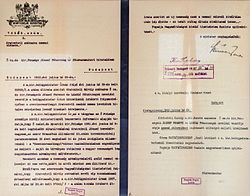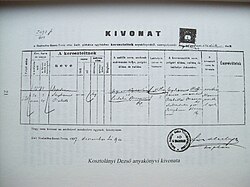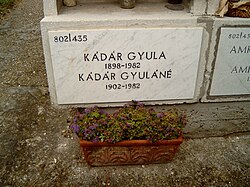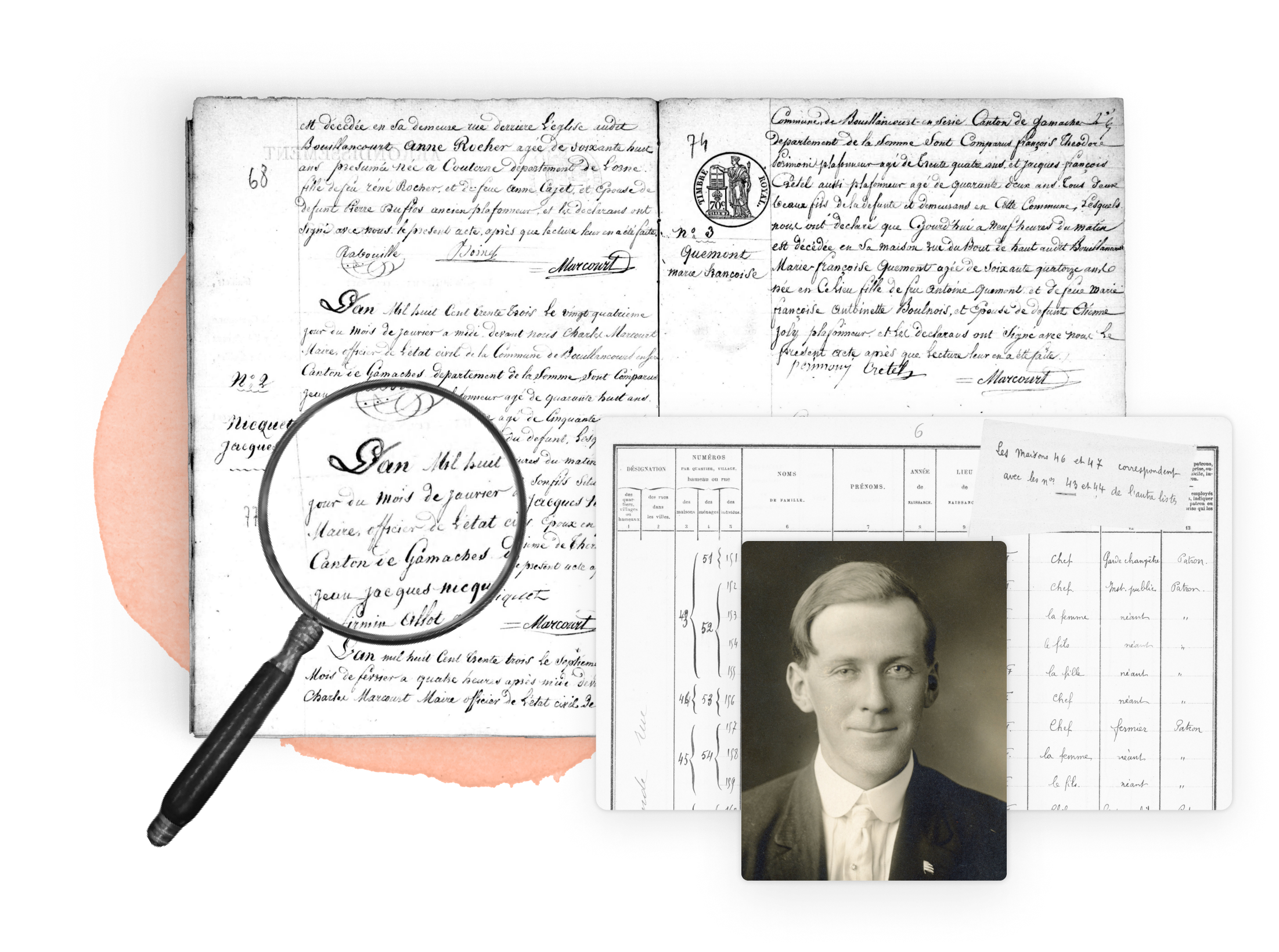
Hungarian surnames are hereditary last names that are used by individuals of Hungarian descent in the territory of Hungary and the autochthonous Hungarian minorities in Slovakia, Zakarpattia (Ukraine), Vojvodina (Serbia), Burgenland (Austria) and especially Transylvania (Romania), as well as the Hungarian diaspora in the USA, Canada, Germany, Israel, France, and Brazil. Hungarian surnames often reflect the individual's occupation, geographical location, or personal characteristics.
Hungarian surnames play a crucial role in genealogical research, as they can provide valuable information about an individual's family history and heritage. Understanding the origins and meanings of these surnames can help researchers trace their family lineage and uncover new connections to their ancestors.
History of Hungarian surnames
The use of surnames in Hungary dates back to the Middle Ages when people began adopting last names to distinguish themselves from others with the same first name. Initially, Hungarian surnames were derived from occupations, geographical locations, or personal characteristics. Over time, these surnames evolved and became hereditary, passed down from generation to generation. Due to the economic development of Hungary in the early 1800s, non-Hungarians from other parts of the empire migrated into Hungarian lands, bringing a significant amount of non-Hungarian-speaking people wishing to succeed in the Kingdom. Partially as a response to this influx of foreigners, as well as following the establishment of ethnic minority rights based on individuals, between 1840 and 1849, the first wave of magyarosítás (Hungarization) of surnames for non-Hungarians took place as part of the Hungarian Revolution. This process was re-established with the establishment of the dual monarchy of Austria-Hungary in 1867, when many more non-Hungarians, especially Jews,[1] changed their family names from German to Hungarian, a process that occurred both voluntarily and as a result of social pressure since Hungarian was the only language allowed to be used in civil administration, legal proceedings, higher education and the language most encouraged to use as a medium of communication. While some of these immigrants translated them directly into Hungarian, some others just changed their original German surnames into Hungarian-sounding forms.[2] Other Hungarians of German and Jewish descent retained their original surnames.[3]
Spelling variations for Hungarian surnames

The geographic position of Hungary, at the center of the visually endless Pannonian Plain, makes it an easy target for invasions. This has caused the borders of Hungary to change many times throughout history, especially in the last 300 years. The first major border change in Hungary came when the Ottoman Empire conquered its central part in 1526, dividing it into three portions: the Habsburg Kingdom of Hungary in the west and north; the Ottoman-controlled south and central parts of the former Kingdom of Hungary; and the Principality of Transylvania, a vassal state of the Ottoman Empire ruled by Hungarian princes until 1711. Between 1683 and 1717, the Habsburg monarchy conquered all the Ottoman territories that were part of the Kingdom of Hungary before 1526, and incorporated some of these areas into the Habsburg Kingdom of Hungary. After the Hungarian Revolution of 1848 and the Austro-Hungarian Compromise of 1867, Hungary became an independent country again, this time as one of the constituent halves of the Austro-Hungarian Empire but retaining self-rule in its internal affairs and administration.[4] However, the most dramatic border change came after losing in World War I, when Hungary was forced to accept the terms of the Treaty of Trianon in 1920; these made the Kingdom of Hungary (the Hungarian half of the Austro-Hungarian monarchy) a landlocked state, with only 28% of its pre-war territory and 36% of its pre-war population, and which made 3.3 million Hungarians –31% of the world's Hungarians– minorities in neighboring countries.[5] This allocated a significant number of autochthonous Hungarian-speaking communities to Austria, Czechoslovakia, Romania, and Yugoslavia. None of these communities were allowed to be reintegrated with Hungary, except the city of Sopron, which was allowed to hold a referendum to decide between returning to Hungarian sovereignty or remaining as an Austrian city on the border with Hungary.[6] Later, between 1938-1941, Hungary annexed back the northern half of Tranylvania, the Bačka region of Vojvodina, Međimurje in Croatia, Prekmurje in Slovenia, the southern strip of Slovakia and Transcarpathia in Ukraine, all areas inhabited by Hungarians, and which were lost again after World War II in 1945.

These relatively dramatic changes in the borders of the Hungarian-speaking lands into different states with different spelling conventions (German in Austro-Hungary and later Austria, Romanian in Romania, Serbo-Croatian in the former Yugoslavia, and Slovak in Czechoslovakia and today Slovakia) causes a number of Hungarian surnames to be spelled very differently in historical documents, even if they belong to the same person but were issued by different authorities before and after a change in the borders of Hungary. For example, the tennis player Monica Seles would have her name written Szeles Mónika in a Hungarian document, Monika Seleš in a Croatian document and Моника Селеш in a Serbian document, with all non-standard Latin characters removed in the name's current form in the USA as the letters ó and š are not used at present in USA records. These spelling differences must be taken into account when researching a Hungarian relative.
Hungarian naming conventions

In Hungarian culture, the surname typically comes before the given name, which is opposite to the naming convention in many Western countries. This "Eastern name order" is a custom that is followed in the countries that make part of the East Asian cultural sphere. Hungarian surnames often have a masculine and feminine form, with the feminine form usually ending in -né. For example, the masculine surname "Kovács" (meaning "smith") would become "Kovácsné" for a married woman.[7] Outside of Hungary, the Eastern naming convention is not used, and neither is the -né suffix added.
Hungarian nobility surnames
Hungary had a noble class that began with landowners in the 11th century and lasted officially until 1947.[8] While the use of noble ranks and styles is still forbidden according to Hungarian law, some aristocrats managed to recover parts of their lands and/or receive compensation, mainly in Transylvania and Slovakia.[9] Some of the better known Hungarian surnames of noble origin are:
Popular Hungarian surnames and their origins
- Nagy, meaning "large" or "great," this surname likely originated as a nickname for someone of large stature or importance
- Kovács, derived from the occupation of a blacksmith
- Tóth, meaning "Slovak" or "from Slovakia," this surname indicates geographical origin
- Szabó, meaning "tailor"
- Horváth, meaning "Croat" or "from Croatia," this surname also indicates geographical origin.
- Varga, meaning "shoemaker"
- Kiss, meaning "small" or "little," this surname likely originated as a nickname for someone of small stature
- Mészáros, meaning "butcher"
- Papp, derived from the occupation of a priest or clergyman
- Takács, meaning "weaver"
Geographic locations for Hungarian surnames
While Hungarian surnames can be found across the territory of the Hungarian-speaking lands, some can indicate the region of origin and end with the suffixes -i or -y, both of which mean "from" or "of" a place.
- Alföld ("from the Great Hungarian Plain")
- Ajtai ("from Aita Mare, in Transylvania")
- Bácskai ("from Bačka in Vojvodina")
- Szegedi ("from Szeged")
- Bánáthy ("from the Banat")
- Erdélyi ("from Transylvania")
- Hevesi ("from Heves")
- Harsányi ("from Harsány")
- Váradi ("from Várad")
- Komáromy ("from Komárno, Slovakia")
- Szatmári ("from Satu Mare, in Transylvania")
- Székely (from Szeklerland, in Transylvania)
Celebrities with Hungarian Surnames
- Monica Seleš, Yugoslavian-American tennis player
- Béla Viktor János Bartók, 20th century Hungarian composer
- Ernő Rubik, Hungarian inventor of the Rubik’s Cube
- Béla Lugosi (born Béla Ferenc Dezső Blaskó), Hungarian-American actor known for his role as Count Dracula
- George Pataki, former Governor of New York
See also
- Balkan ethnicity
- Austrian surnames
- German surnames
- Rusyn surnames
- Serbian surnames
- Croatian surnames
- Slovene surnames
- Slovak surnames
- Russian surnames
- Ukrainian surnames
- Belarusian surnames
- Polish surnames
- Bulgarian surnames
- Czech surnames
- Silesian surnames
- Rusyn surnames
- Most common Bosnian surnames
- Macedonian surnames
- Russian Jewish surnames
- Canadian surnames
- American surnames
- Latvian surnames
- Lithuanian surnames
- Irish surnames
- French surnames
- Dutch surnames
- Hungarian Jewish surnames; most Hungarian Jews adopted distinctively non-Jewish Hungarian surnames in the 1800s
Explore more about Hungarian surnames
- Last names on MyHeritage
- Historical records from Hungary on MyHeritage
- Historical records from Romania on MyHeritage
- Historical records from Slovakia on MyHeritage
- National Archives of Hungary
References
- ↑ Laczó, Ferenc. Jewish Questions and the contested nation: On major Hungarian debates of the Nineteenth Century. Journal of Modern Jewish Studies, 14725886, November 2014, Vol. 13, Issue 3
- ↑ Pieter M. Judson, Marsha L. Rozenblit. Constructing nationalities in East Central Europe (2005), p. 41
- ↑ Farkas, Tamás. 2009a. Surnames of Foreign Origin in a Language Contact Situation. The Reasons and Ways of Their Changes and Their Influence on the Surname Stock in Hungary. In Wolfgang Ahrens, Sheila Embleton & André Lapierre, eds., Names in Multi-Lingual, Multi-Cultural and Multi-Ethnic Contact, Proceedings of the 23rd International Congress of Onomastic Sciences, 2008, Toronto: York University, p. 365-374.
- ↑ The Dual Monarchy: two states in a single empire
- ↑ Raffay, Ernő; Szabó, Pál Csaba. A Trianoni diktátum története és következményei. Trianon Múzeum.
- ↑ Irredentist and National Questions in Central Europe, 1913-1939: Hungary, 2v, Volume 5, Part 1 of Irredentist and National Questions in Central Europe, 1913-1939 Seeds of conflict. Kraus Reprint. 1973. p. 69.
- ↑ Naming|Hungarian Culture. SBS Cultural Atlas
- ↑ Gudenus, János; Szentirmay, László (1989). Összetört címerek: a magyar arisztokrácia sorsa és az 1945 utáni megpróbáltatások [Broken Coats-of-Arms: The Hungarian Aristocrats' Fate and the Scourge after 1945] (in Hungarian). Mozaik. ISBN 963-02-6114-6
- ↑ Zavaros korok áldozatai: hazatért nemesi családok


